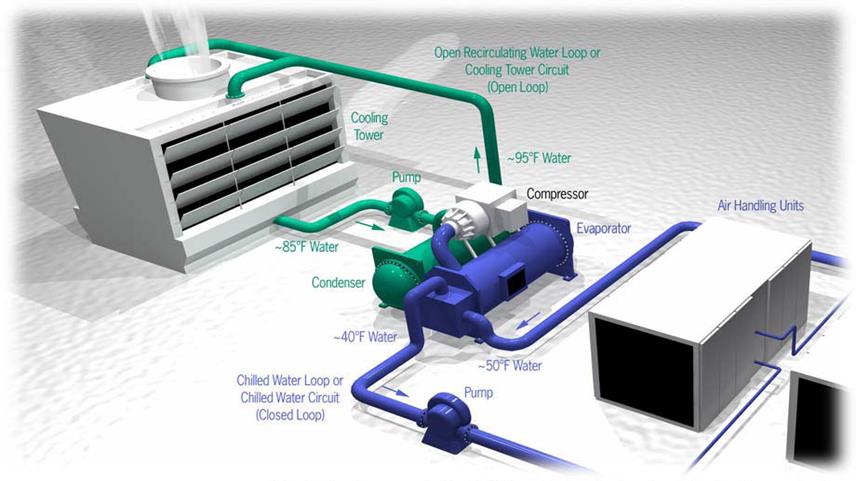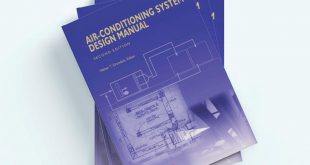HVAC (Heating, Ventilation, and Air Conditioning) is an essential system for creating a comfortable indoor environment. HVAC systems are used in residential, commercial, and industrial buildings to control the temperature, humidity, and air quality of the indoor space. The main components of an HVAC system are the heating system, cooling system, ventilation system, and control system. In this blog post, we will discuss each of these components in detail.

- Heating System: This component is responsible for generating heat to maintain a comfortable indoor temperature during colder months. There are several types of heating systems, including furnaces, boilers, heat pumps, and radiant heating systems.
- Cooling System: This component is responsible for generating cool air to maintain a comfortable indoor temperature during hotter months. There are several types of cooling systems, including central air conditioning systems, ductless mini-split systems, and evaporative coolers.
- Ventilation System: This component is responsible for providing fresh air to the indoor environment and removing stale air. There are several types of ventilation systems, including natural ventilation, mechanical ventilation, and energy recovery ventilation.
- Thermostat: This component is responsible for regulating indoor temperature by controlling the heating and cooling systems. Thermostats can be either programmable or non-programmable and allow users to set different temperatures for different times of the day.
- Air Handler: This component is responsible for circulating air throughout the HVAC system. It consists of a blower motor, evaporator coil, and air filter.
- Heat Exchanger: This component is responsible for transferring heat between the heating and cooling systems.
- Evaporator Coil: This component is responsible for absorbing heat from the indoor air in the cooling system.
- Condenser Coil: This component is responsible for releasing heat to the outdoor air in the cooling system.
- Ductwork: This component is responsible for distributing air throughout the building. It consists of a series of ducts, dampers, and registers.
- Compressor: This component is responsible for compressing and circulating refrigerant in the cooling system.
- Expansion Valve: This component is responsible for regulating the flow of refrigerant in the cooling system.
- Air Filter: This component is responsible for removing dust, allergens, and other pollutants from the indoor air.
- Combustion Chamber: This component is only found in heating systems that burn fuel. It is responsible for burning fuel and generating heat.
- Flue: This component is only found in heating systems that burn fuel. It is responsible for venting exhaust gases from the combustion chamber to the outside.
These are some of the main components of an HVAC system, and each plays a crucial role in maintaining a comfortable indoor environment.
Heating System
The heating system is responsible for maintaining a comfortable indoor temperature during cold weather. There are several types of heating systems used in HVAC, including furnaces, boilers, heat pumps, and radiant heating systems.
Furnaces are the most common type of heating system used in residential and commercial buildings. They work by heating air and then distributing it through ductwork to the various rooms in the building. Furnaces can be powered by natural gas, propane, or electricity.
Boilers are another type of heating system that is commonly used in commercial and industrial buildings. They work by heating water or steam, which is then distributed through pipes to heat the building. Boilers can be powered by natural gas, propane, or oil.
Heat pumps are becoming increasingly popular as a heating system for residential and commercial buildings. They work by extracting heat from the outside air or ground and transferring it into the building. Heat pumps can also be used for cooling during the summer months.
Radiant heating systems are a type of heating system that is installed under the floor or in the walls or ceiling. They work by heating the objects in the room, rather than the air, which can be more energy-efficient than traditional heating systems.
Cooling System
The cooling system is responsible for maintaining a comfortable indoor temperature during hot weather. There are several types of cooling systems used in HVAC, including central air conditioning systems, ductless mini-split systems, and evaporative coolers.
Central air conditioning systems are the most common type of cooling system used in residential and commercial buildings. They work by using a refrigerant to absorb heat from the indoor air and then expelling it outside. The cooled air is then distributed through ductwork to the various rooms in the building.
Ductless mini-split systems are becoming increasingly popular as a cooling systems for residential and commercial buildings. They work by using an outdoor unit and one or more indoor units to cool individual rooms or zones in the building.
Evaporative coolers, also known as swamp coolers, are a type of cooling system that is commonly used in dry climates. They work by using a fan to blow air over wet pads, which cools the air before it is distributed through the building.
Ventilation System
The ventilation system is responsible for maintaining a healthy indoor environment by removing stale air and introducing fresh air. There are several types of ventilation systems used in HVAC, including natural ventilation, mechanical ventilation, and energy recovery ventilation.
Natural ventilation is the simplest form of ventilation and involves using windows, doors, and vents to allow fresh air into the building and stale air to exit.
Mechanical ventilation involves using fans to circulate air throughout the building. There are several types of mechanical ventilation systems, including exhaust-only systems, supply-only systems, and balanced systems.
Energy recovery ventilation is a type of ventilation system that is becoming increasingly popular for its energy efficiency. It works by using a heat exchanger to transfer heat and moisture from the stale air being expelled from the building to the fresh air being introduced into the building.
Control System
The control system is responsible for regulating the temperature, humidity, and air quality in the building. It includes thermostats, sensors, and other control devices that monitor and adjust the HVAC system based on the desired indoor environment.
Thermostats are the most common type of control device used in HVAC. They are used to set the desired indoor temperature and can be either programmable or non-programmable. Programmable thermostats allow users to set different temperatures for different times of the day, while non-programmable thermostats maintain a consistent temperature throughout the day.
Sensors are another type of control device used in HVAC. They are used to monitor the indoor temperature, humidity, and air quality and provide feedback to the HVAC system. For example, if the indoor temperature is too high, the sensor will send a signal to the HVAC system to turn on the air conditioning.
Other control devices used in HVAC include dampers, valves, and actuators. Dampers are used to control the flow of air through ductwork, while valves are used to control the flow of water through pipes in a hydronic system. Actuators are used to control the operation of various components in the HVAC system, such as dampers and valves.

Conclusion
In conclusion, HVAC systems are essential for creating a comfortable indoor environment. The main components of an HVAC system include the heating system, cooling system, ventilation system, and control system. Each of these components plays a crucial role in maintaining the desired indoor temperature, humidity, and air quality. When designing or upgrading an HVAC system, it is essential to consider the specific needs of the building and its occupants to ensure optimal performance and energy efficiency.
 Boilersinfo Boiler and Mechanical Power Digital Library
Boilersinfo Boiler and Mechanical Power Digital Library





